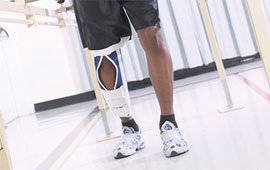What Are Orthotics And Prosthetics?

There are many ways to replace the missing or damaged bone or tissue in your body, but not every method of surgery is effective. A very common surgical treatment for injuries to the foot or ankle is a prosthetic leg, a protective device that goes over your feet and ankle and holds the broken bones in place. Cast heals, while you continue to wear your cast for three months. However, it is not without drawbacks.
First, it can be expensive. For each day you wear a cast, you have to pay at least one hundred dollars for the cast, and possibly much more depending on the complexity of the injury. Then there are the several weeks you must wear the cast before you can go back on your feet, during which time you will be on painkillers or antibiotics to relieve the inflammation of the wound. Plus, you will often have to remove your shoes and socks before going back out.
There is also the problem of getting used to the cast. You will find that when you first start wearing the cast, you will notice that your feet hurt after you have been in them for only a few hours, but once you get used to them, you will find that your feet feel normal. This discomfort may also be present, even when you take your shoes off. The most annoying thing is that if you have to take off your shoes while wearing your cast, you will end up looking even worse than when you were barefoot. You might end up with blisters because you do not know how to keep your shoes off. Plus, you will often wake up with an infection in your cast.
There are some people who are uncomfortable wearing the cast for a long term. For these people, a splint is a better option, especially if they have a bone condition that requires them to wear an orthotic on a regular basis.
An orthotics is an artificial limb that goes over your damaged or missing bone, making the structure of your bone stronger. An orthotic also helps to protect the bone by increasing the flow of blood to the bone. This also means the bone has less room to absorb shock. and therefore, is less likely to break. Orthotics are available in two forms: rigid and flexible.
A rigid orthotic is a type of splint that fits around your ankle and foot. The rigid type of splint is usually made of titanium, which are very lightweight, but very strong and rigid. They are available in various strengths. A flexible orthotic is generally looks like an ankle or foot boot but is thinner so that it does not interfere with your daily activities. You can get more enlightened on this topic by reading here: https://en.wikipedia.org/wiki/Orthotics.
